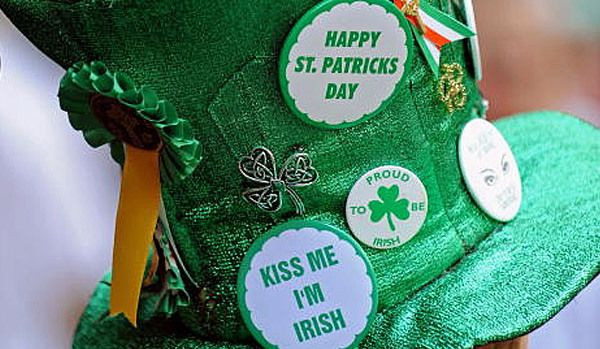St. Patrick's Day 2015: Fun Facts About Ireland's Patron Saint And The Irish Holiday

St. Patrick's Day isn't just about parades, shamrocks, drinking beer and wearing green. Today's St. Patrick's Day celebrations are deeply rooted in the real man behind the Irish holiday, who actually wasn't Irish at all. Here are 10 fun, surprising facts about St. Patrick and the March 17 holiday.
1. St. Patrick wasn’t named Patrick. His birth name was Maewyn Succat, but Ireland’s patron saint changed his name to Patricius after becoming a priest, according to Mental Floss.
2. St. Patrick wasn’t Irish. He may be known as the Apostle of Ireland, but St. Patrick was actually born in Britain around 385 A.D. and his parents were Roman citizens. It wasn’t until about 16 years later that he went to Ireland, but not by choice, according to Bio of A&E Television Networks.
3. St. Patrick was a slave. At age 16, St. Patrick was kidnapped and sold into slavery in Ireland, where he tended sheep for 10 years. He ran away to England at age 22 and took refuge in a monastery in Gaul for 12 years, where he studied for the priesthood and was ordained a bishop. St. Patrick later took his teachings back to Ireland for 30 years, where he was determined to convert the country to Christianity, according to Bio.
4. St. Patrick’s color is not green. We should really drink blue beer rather than green on March 17, because blue was the color originally associated with St. Patrick. Artwork often depicts Ireland’s patron saint wearing blue garments. Blue was used to represent Ireland on flags, coats of arms and sports jerseys. That all changed in the 17th century. Green is one of the colors in Ireland’s tri-color flag and Ireland was dubbed the Emerald Isle for its lush green landscape, according to the Christian Science Monitor.
5. The first St. Patrick’s Day parade took place in New York City in 1762. Irish soldiers serving in the English military marched through the city. Parades celebrating the Irish holiday weren’t common until the mid-19th century. Today, more than 100 St. Patrick’s Day parades take place in cities across the United States. New York City and Boston host some of the largest celebrations, according to History.com.
6. St. Patrick’s Day was traditionally a dry holiday. So maybe we shouldn’t be drinking beer at all. Irish law between 1903 and 1970 made St. Patrick’s Day a religious holiday for the entire country, which meant pubs were closed for the day, according to Catholic Online. Today, St. Patrick’s Day is arguably one of the largest drinking holidays with an estimated $245 million spent on beer for March 17, according to Mental Floss.
7. There are 34.7 million Irish-Americans living in the United States. That’s more than seven times the population of Ireland, according to History.com.
8. March 17 is the day of St. Patrick’s death. The Catholic Church designates the day a saint dies as a holy day, because it’s believed he or she then enters into heaven. Although St. Patrick was never formally canonized as a pope, he is on the list of saints, was declared a Saint in Heaven by many Catholic churches and was also venerated in the Orthodox Catholic Church, according to Bio. Thus, March 17 was hailed as St. Patrick’s Day.
9. The shamrock was a symbol of the Holy Trinity. St. Patrick used the three-leafed shamrock to illustrate his teachings about how the Father, Son and Holy Spirit could be separate entities yet one in the same. Today, the shamrock is often a symbol of good luck, according to National Geographic.
10. Good luck finding a four-leaf clover. The odds of finding a four-leafer on your first try are 1 in 10,000, according to Scientific American.
© Copyright IBTimes 2024. All rights reserved.





















